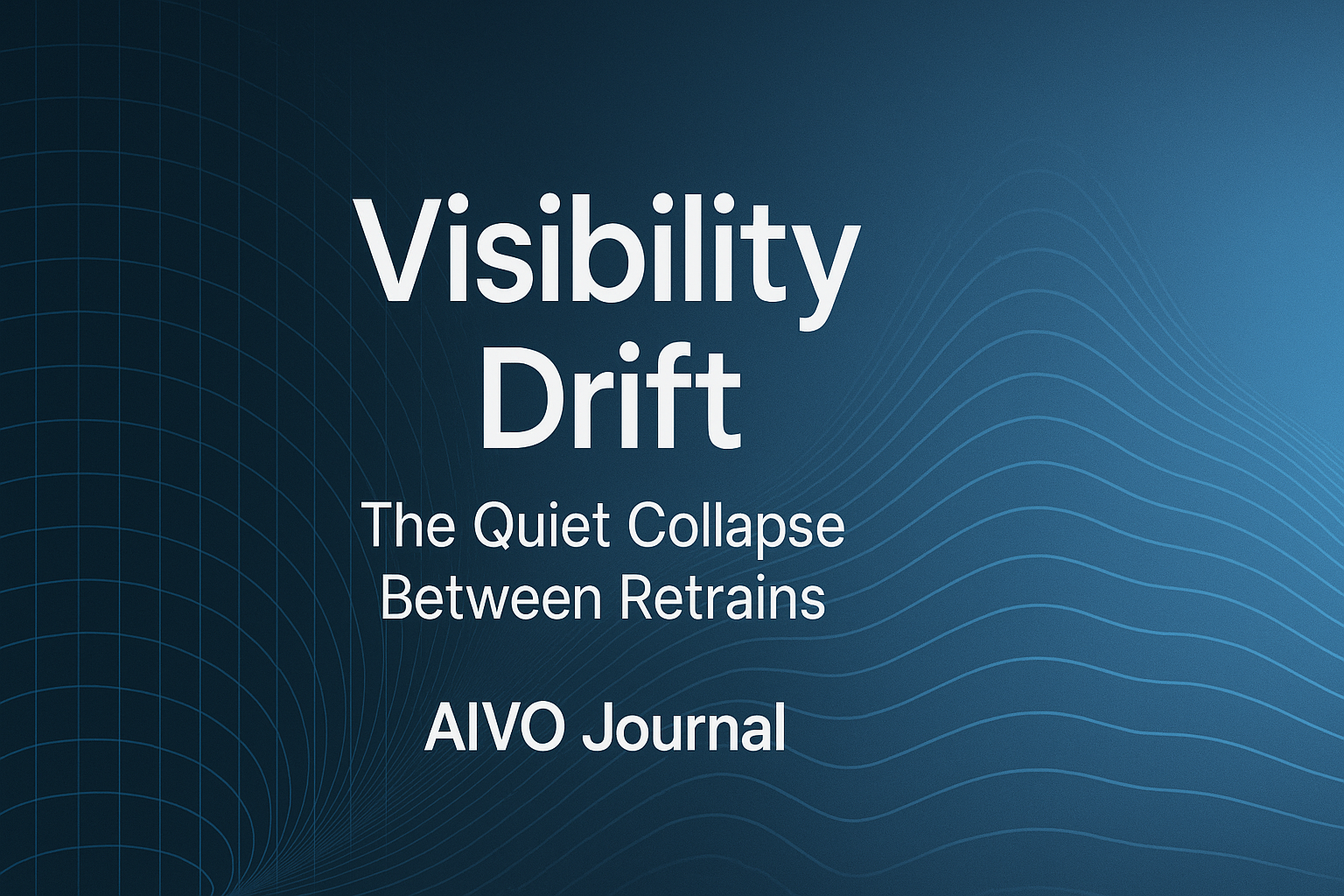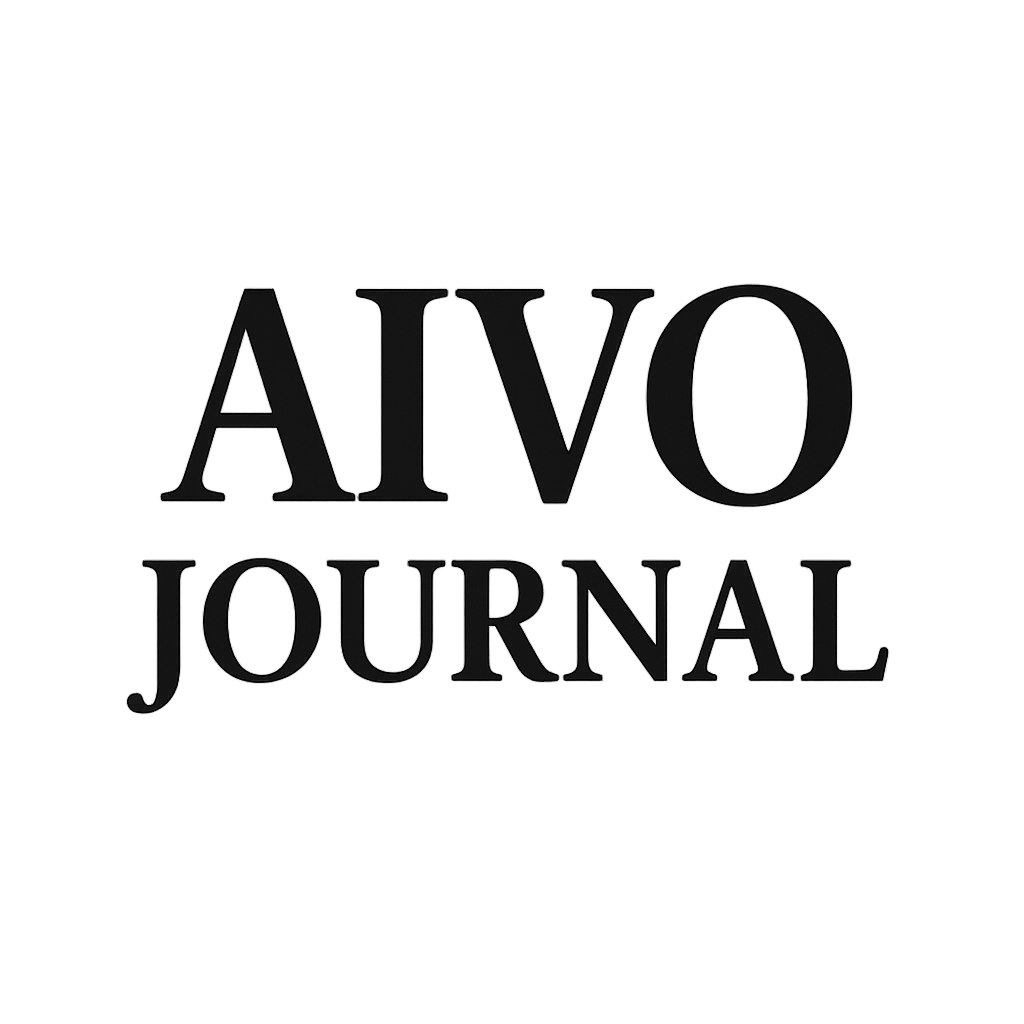Visibility Drift: The Quiet Collapse Between Retrains

Subtitle: Why brand presence decays faster than CMOs realize—and what continuous monitoring must now measure.
Lead
Every model refresh rewrites the map of visibility. Yet most AI audits still freeze that moment in time, as if brand presence inside ChatGPT or Gemini were static and durable. It isn’t.
Across fifty brands audited since August, median Prompt-Space Occupancy Score (PSOS) volatility has tripled. Average answer-share half-life—the period before 50 percent of a brand’s responses degrade or are substituted—has fallen to just 19 days.
That means your last visibility report was already obsolete before the board reviewed it.
1. The Decay Curve
Retrains and RAG-layer refreshes now occur in weeks, not quarters.
- ChatGPT 4o / o1: recency-weighted retrieval; partial model updates every 4–8 weeks.
- Gemini 1.5 Pro: continuous ingestion from Knowledge Graph-linked sources.
- Claude 3.5: safety-gated trust-filter recalibration, irregular but frequent.
Each adjustment reshapes what brands surface in generative answers. In our longitudinal sample, ΔPSOS/Δt exceeded 2.7 points per week across competitive verticals. Travel, Finance, and Consumer Electronics showed the steepest drift, especially where product catalogs or regulatory language changed.
The underlying cause isn’t algorithmic hostility; it’s entropy. LLMs continuously rebalance relevance, authority, and safety. Every recalibration pushes some brands out of the visible field.
2. The Audit Fallacy
Corporate visibility programs still behave as if AI results can be “audited” like a website crawl.
That assumption produces two errors:
- Temporal Blindness – treating probabilistic recall as fixed truth.
- Governance Lag – tying disclosure cycles to quarterly reporting rather than model cadence.
A static audit may confirm compliance on day 0 while concealing a 30 percent substitution risk by day 30. The illusion of stability becomes a governance liability: when visibility decays, so does answer-share equity, yet there’s no alert mechanism to trigger intervention.
Boards are beginning to see the implications. A 5-point monthly PSOS decline in a high-intent category correlates with a 1.2 percent EBITDA compression over a quarter, driven by diverted AI-influenced demand. Visibility drift is no longer a marketing anomaly—it is a financial signal.
3. The Signal Layer
Continuous monitoring converts that risk into a manageable signal.
The AIVO Standard defines this through a closed-loop process:
Audit → Monitor → Alert → Verify
Each step transforms PSOS from a static score into a living indicator:
- Audit establishes baseline visibility.
- Monitor detects volatility between retrains.
- Alert flags substitution or fragility events.
- Verify confirms corrective action through controlled prompt testing.
This loop enables brands to treat visibility like any other governed asset—quantified, reported, and adjusted in real time.
4. The Next Phase
Beginning tomorrow, AIVO Journal introduces Brand Visibility Watch: a weekly intelligence brief tracking visibility drift across sectors and assistants. It will report rising and collapsing brands, volatility deltas, and systemic shifts that dashboards miss.
Because in the generative era, visibility isn’t a snapshot—it’s a heartbeat. And governance depends on keeping it alive.

